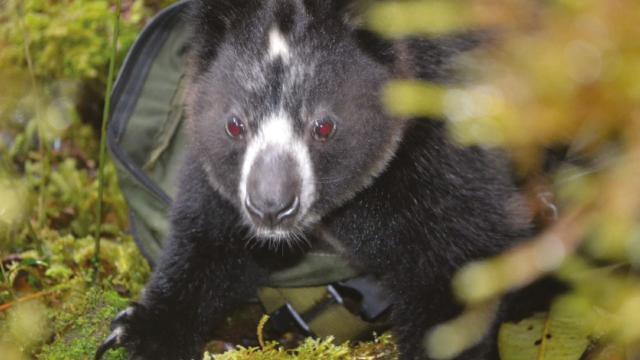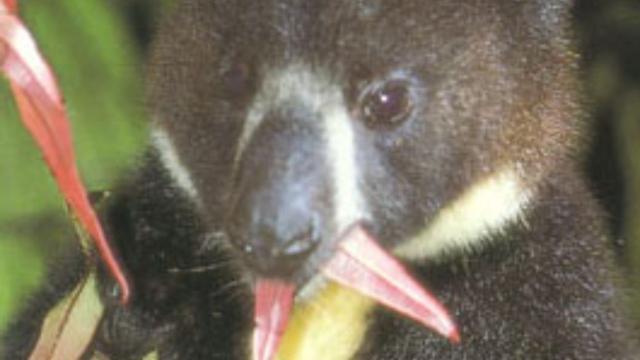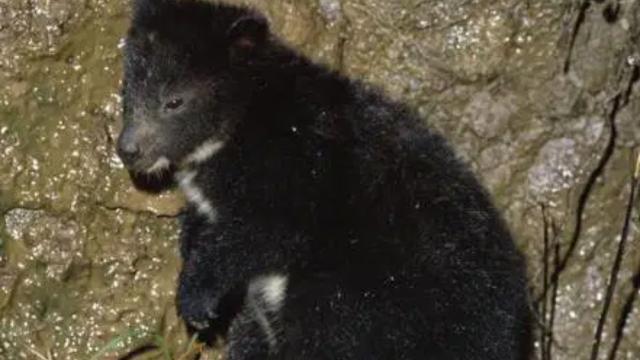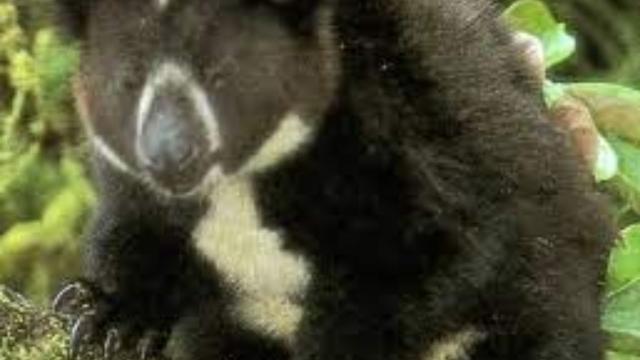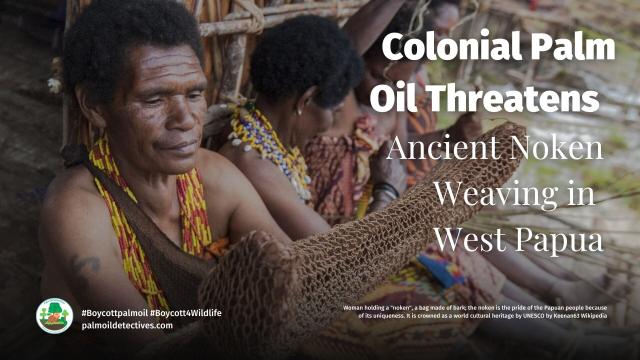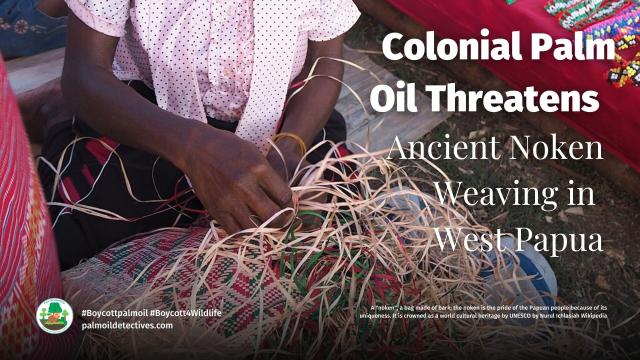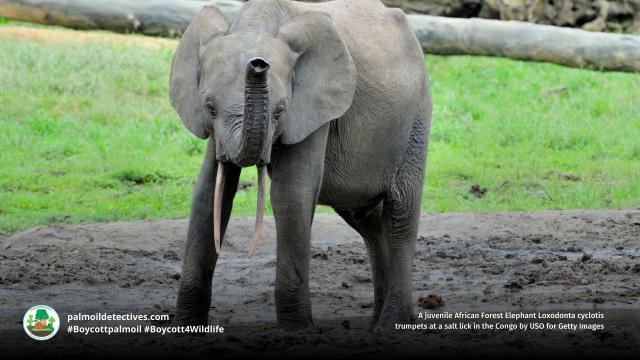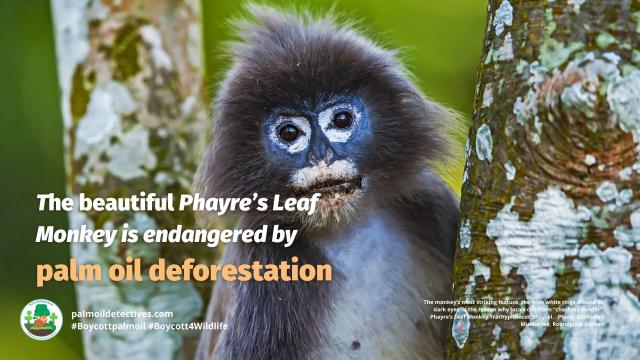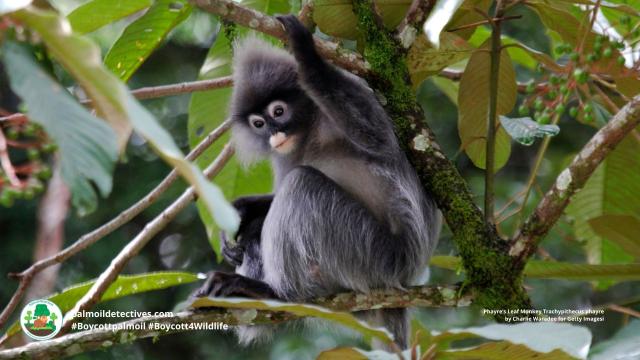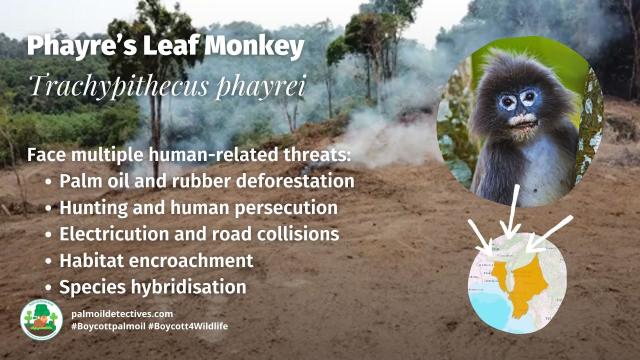Search
Items tagged with: palmoil
How our food choices cut into forests and put us closer to viruses
As the global population has doubled to 7.8 billion in about 50 years, industrial agriculture has increased the output from fields and farms to feed humanity. One of the negative outcomes of this t…Palm Oil Detectives
Grey Crowned Crane Balearica regulorum
Endangered Grey Crowned Cranes are a regal and graceful bird of Uganda, Tanzania, DRC, and Namibia. Help them to survive and join the boycott4wildlifePalm Oil Detectives
farmlandgrab.org/post/33122?ut…
Dingiso Dendrolagus mbaiso
Known affectionately as the ‘Panda tree kangaroo’ for their black and white faces, dingisos are one of the rarest and most charismatic species of tree kangaroos, living only in the remo…Palm Oil Detectives
Ecosystems Sell Dirt Cheap for Palm Oil Filled Snickers and KitKat
A recent report highlighted by Mongabay uncovers that deforestation-linked palm oil may still be in popular snacks like Snickers and Kit Kat, despite pledges from brands like Mars, Nestlé, and Mond…Palm Oil Detectives
Palm Oil Threatens Ancient Noken Weaving in West Papua
Colonial palm oil and sugarcane causing the loss of West Papuans’ cultural identity. Land grabs force communities from forests, threatening Noken weavingPalm Oil Detectives
💰☠️ $8.9 TRILLION funds deforestation! BlackRock, Vanguard, JPMorgan lead with $1.6T funding #palmoil, #soy and #meat #deforestation 🌴🔥 Support the #EUDR ban Dec 30 ⛔️ #BoycottPalmOil #Boycott4Wildlife
palmoildetectives.com/2025/12/…

Finance giants fuel $8.9 trillion deforestation economy
Forest 500 report shows 150 of the world’s largest financial institutions invested nearly $9 trillion in deforestation-linked industries. Support EUDR!Palm Oil Detectives
en.tempo.co/read/2071450/why-d…
Green Lie of “Sustainable” Aviation Biofuel
“Sustainable” Aviation Fuel (SAF) is a biofuel alternative to using fossil fuels for powering planes and cars. SAF is being aggressively marketed by multiple industries as a greener alt…Palm Oil Detectives
Transparency International: Corruption of Indonesian Palm Oil
According to a May 2023 report by Transparency International, the top 50 palm oil companies in Indonesia are beset by deep problems: a lack of transparency in company ownership and who are the ulti…Palm Oil Detectives
The markets are watching: deforestation becomes a boardroom issue - Geographical
Investors are waking up to the financial risks of deforestation. As new regulations loom, big brands face pressure to clean up supply chains – or risk reputational and market fallout In most cases, deforestation is driven by global demand for everyda…Mark Rowe (Geographical Magazine)
Palm Oil Free Soap
Here are some palm oil free soaps that do not contain rainforest-destroying palm oil. If you are ever in doubt look for the prefixes: LAUR, STEAR, GYLC and PALM in the ingredients list on packaging…Palm Oil Detectives
Savage’s Glass Frog Centrolene savagei
Perched on delicate leaves above rushing mountain streams, Centrolene savagei is a rare frog of wonder. The Savage’s Glass Frog, also known as the Savage’s Cochran Frog has translucent …Palm Oil Detectives
Beef, Palm Oil and Timber: How Wealthy Nations Fuel Deforestation
Beef palm oil, and timber consumption in wealthy nations is driving mass deforestation and species extinction in tropical regions. EUDR is vital to stop this!Palm Oil Detectives
Deforestation and Mining Threaten Rare Species at Lake Poso
Deforestation, mining, and palm oil expansion are pushing rare endemic species at Indonesia’s Lake Poso to the brink. Urgent action needed, boycott palm oil!Palm Oil Detectives
Nigeria Risks Losing All Its African Forest Elephants – Here’s How To Protect Them
The numbers and ranges of #elephants in #Nigeria have declined greatly over time. The main cause of this has been human activity, like logging, palm oil and cocoa #agriculture, which threaten their…Palm Oil Detectives
Attenborough’s Long-Beaked Echidna Zaglossus attenboroughi
Attenborough’s long-beaked echidna (Zaglossus attenboroughi), known locally as “Payangko,” is one of the most evolutionarily distinct mammals and is native to the Cyclops Mountain…Palm Oil Detectives
palmoildetectives.com/2025/09/…
Palm Oil Free Christmas
Enjoy the festive season and be reassured that your #Christmas feast is not contributing to #palmoil related rainforest destruction, #humanrights abuses, #extinction and #slavery. Take the fight fo…Palm Oil Detectives
Snack giant PepsiCo allegedly sourced “sustainable” palm oil from razed Indigenous land in Peru
PepsiCo’s supply chain is linked to environmental and human rights violations in Peru, involving Amazon deforestation and Indigenous land invasion. For three years, palm oil from deforested S…Palm Oil Detectives
Orange-breasted Falcon Falco deiroleucus
Help protect the Orange-breasted Falcon, vibrant birds of prey facing significant threats from palm oil, gold mining, and soy deforestation, boycott palm oil!Palm Oil Detectives
Sumatran Tiger Panthera tigris sondaica
The Sumatran tiger Panthera tigris sondaica is a critically endangered big cat, with less than 600 of their species alive in the wild today. Once living in Java and Bali, they are now only found in…Palm Oil Detectives
Grey Crowned Crane Balearica regulorum
Endangered Grey Crowned Cranes are a regal and graceful bird of Uganda, Tanzania, DRC, and Namibia. Help them to survive and join the boycott4wildlifePalm Oil Detectives
Violence for Palm Oil Against Peasant Communities in Honduras Meets Resistance
In the Aguán Valley of northern Honduras, peasant communities reclaiming ancestral lands face increasing violence and intimidation from armed groups linked to organised crime. The Dinant Corporatio…Palm Oil Detectives
Papua’s ‘Empty Lands’: A Dangerous Myth Displacing Indigenous Peoples
Challenge a dangerous colonial myth that West Papua is an ’empty land’. This only serves the colonial domination of Indonesia not ancient tribes living there!Palm Oil Detectives
Sunda Clouded Leopard Neofelis diardi
Gliding through the rainforest canopy like a phantom predator, the Sunda Clouded Leopard moves with unmatched grace, making them one of the least understood big cats in the world. Their spectacular…Palm Oil Detectives
Palm Oil Free Skincare products
Here are some palm oil free skincare and beauty products that do not contain rainforest-destroying palm oil. If you are ever in doubt look for the prefixes: LAUR, STEAR, GYLC and PALM in the ingred…Palm Oil Detectives
Blonde Capuchin Sapajus flavius
Only rediscovered in 2006, Blonde Capuchins are highly intelligent critically endangered primates of Brazil threatened by palm oil and meat deforestationPalm Oil Detectives
Around 25% of Africa’s Land is Damaged: This is How We Fix It!
Almost 25% of all land in Africa has been damaged driven by climate change and deforestation for mining palm oil and cocoa. Take action and protect forests!Palm Oil Detectives
MSC and RSPO Absolutely Untrustworthy, Greenpeace Report
Greenpeace report reveals severe failures of ecolabel RSPO certifying palm oil and FSC certifying seafood. Consumers are being greenwashed. Boycott palm oil!Palm Oil Detectives
Phayre’s Leaf Monkey Trachypithecus phayrei
Phayre’s leaf monkey, also known as Phayre’s langur, are remarkable Old World monkeys distinguished by large, white-rimmed eyes that lend them a “spectacled” appearance. Known locally as ‘Cha…Palm Oil Detectives
Irrawaddy Dolphin Orcaella brevirostris
Intelligent and social Irrawaddy dolphins, also known as the Mahakam River dolphins or Ayeyarwady river #dolphins have endearing faces. Only 90 to 300 are estimated to be left living in the wild. T…Palm Oil Detectives

